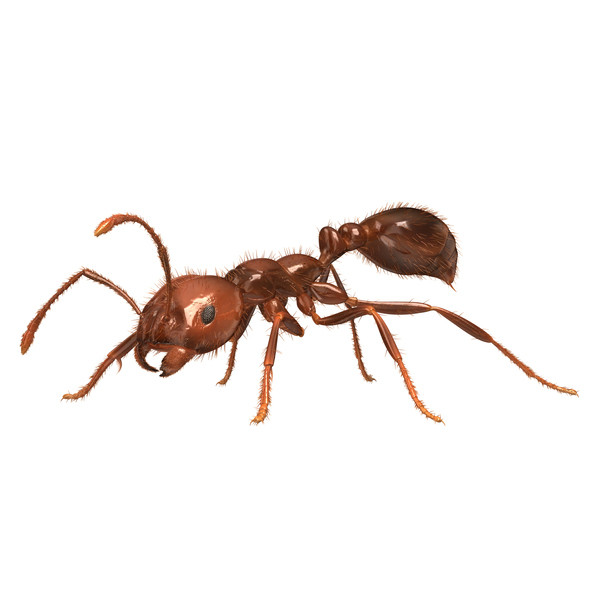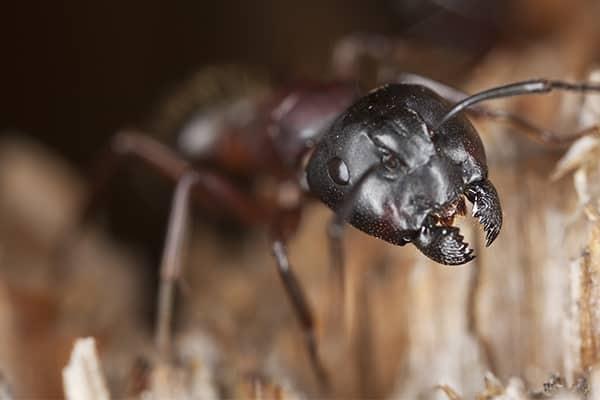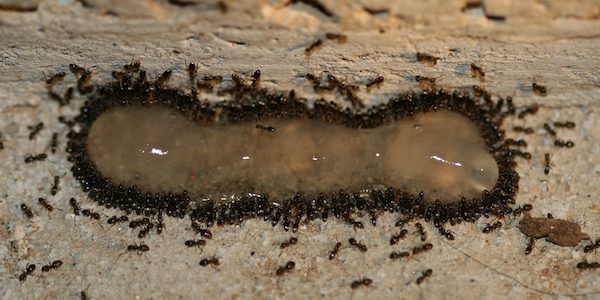Can Chalk Get Rid of Ants?
Have you ever picked up a chalk to try and draw a line on surfaces you’ve spotted with ants crawling about, chances are you already believing that a simple line of chalk can remove ants away from your premises.
Does drawing a line of chalk near the ant hole or along the ant trail useful in:
Keeping the ants away
Killing the ants
Temporarily derailing an ant trial
All of the above
Is chalk an effective remedy against ants?
An old wives tales, many of you would have chosen some answers which ‘keep the ants away’ and ‘killing ant’. This is false and chalk itself would not work to eliminate ants completely. While the drawn line of thick chalk can temporarily derail an ant trial, making the colony confused with the scents. However these ants soon establish their scents and the trail can come back at work again.
While derailing an ant trail may seem like the ants are being kept away, these ants are definitely not killed. They are only temporarily shifted away from the original site as they avoid the chalk line.
Get rid of ants at home
Do you have ants at home? Getting rid of ants is more than just chalk and water. Should you have an ant infestation at home; it can be difficult to get rid of ants with DIY methods. Proper and correct identification of the ant species is required before the right treatment method is recommended, this best done by a pest control specialist.

Tips for Keeping Ants Out Of Your Kitchen This Summer
summertime is really all about the food – whether it’s barbecues in the backyard, fresh fruits and veggies for weeknight dinners, or snacks around the firepit with a sunset in the background. Unfortunately, the warm weather is also prime time for ants, and an infestation of these invaders can ruin just about any picnic before the basket is even packed.
Whether you’re a dedicated summer diner or a casual warm-weather snack lover, the spring and summer are prime time for ants to make their way into your kitchen and set about stealing, eating, or otherwise infecting all of your favorite foods.
Keep food crumbs to a minimum
It may seem obvious, but one of the primary temptations for ants looking to settle into your kitchen is the availability of food left for the taking. Remember, ants will seek out just about anything they can bring back to the colony: crumbs of bread, bits of fruit, and even grains of salt. Plus, they’ll let other colony members know where they found it, and how to get back there to get more.
Don’t allow standing water to pool or sit undisturbed
While food may be a major motivator for ant explorers looking to extend their supply lines, access to water is also a critical part of any colony’s survival. Even a small puddle or pool of water can quench an ant’s thirst for quite a while – and the more reliable the water source, the closer the colony will want to keep to your kitchen
Keep all pantry items securely sealed and out of reach from the ground
Few feelings make a homeowner more uncomfortable than reaching into a bag of flour or a sack of snacks and finding ants busy chomping away. Not only will this mean a lot of wasted food, but also that ants have found a stable central point to explore from in your pantry.

Get Rid of Fire Ants with These Helpful Pest Control Tips
With its beautiful weather throughout the year and plenty of water, Florida is a haven for lots of pests. Unfortunately, fire ants are one of them. While many homeowners are content to simply deal with some pest issues, spotting fire ants in the yard can easily create a five-alarm situation. What’s a homeowner to do? Get rid of fire ants, of course, and these tips can help.
Learn to Find The Mounds
Fire ants will build mounds in almost any kind of soil. You’re more likely to see them, though, in open, sunny areas like your lawn. If the soil conditions are ideal, a fire ant mound can reach up to 24 inches in height. Even if they’re not right out in the open, these mounds are easy to spot. Take a look around any rotting wood on your property, stumps, trees, or at the edge of your foundation. If you see something that looks like a mound, look for the ants themselves which are 1/8 to 1/4 inch in length.
Understand the Dangers
Fire ant bites are certainly painful, but they’re a lot like the stings and bites of other insects. They’ll hurt or itch for a while, and you’ll want to clean them and work to prevent infection, but the pain should subside in a day or two. You’ll notice a small blister where a fire ant sting has occurred, and as tempting as it is to scratch it, it’s important to remember that it could get infected easily. Keep in mind that there is a small percentage of people who are allergic to these stings, and in that case, they can be lethal.
Practice Prevention for Better Fire Ant Control
Good fire ant control requires an understanding of what fire ants are looking for. They want a source of food, a source of water, and a place to live. You can control all of those things on your property. Start by eliminating potential nesting sites. Trim your trees and shrubs to ensure that the foliage doesn’t touch your home. If you have mulch or a similar bedding material, turn it every few weeks to keep the amount of moisture it retains lower. Mow your lawn on a regular basis, and remove your grass clippings.
When Fire Ants Removal Becomes a Necessity
Even if you do what you can to prevent fire ants, you may still end up infested. Fire ant mounds reach well underground, and that means if your neighbor has them, you may still end up dealing with them on your property. Fortunately, there are plenty of good treatment methods, but don’t be tempted to grab an off-the-shelf solution at the hardware store. They’re only designed to treat the creatures you see, not the queen and thousands of other workers teeming under the soil. Off-the-shelf products mean introducing chemicals to your yard that may end up doing more harm than good

Tips For Keeping Carpenter Ants Out Of Your Home
Do you know what type of ant is inside your home? It can be hard to tell if you’re dealing with carpenter ants or a different kind and is why it’s important to take any ants you see seriously. Most ants are nuisance pests and contaminate food, but carpenter ants will also damage the stability of your home. The destruction that carpenter ants cause is similar to that of termites. They tunnel through wooden structures, hollowing them out and making them insecure.
Ant infestations can occur year-round here in, which is why preventative measures are necessary. At this time of year, it is particularly important to actively defend your home. The warmer the weather, the more mobile ants become. Given that it’s June, we’re going to see an increase in carpenter ants over the next few months. If you haven’t done so already, now is the time to put preventative steps in place for the summer.
Fix leaks
Carpenter ants will look for soft, damp wood first because it’s easier to tunnel through.
Repairs
Stopping leaks isn’t always enough. It is a good idea to replace wood that is already damaged
Remove food sources
Carpenter ants do not eat wood the way termites do. They tunnel into wooden structures to build nests but obtain their food elsewhere, like your kitchen or trash. Make sure food and trash bins are well-sealed.
ANT BAITING TIPS
Baiting for ants can be very much like fishing. Sometimes the ants attack with vengeance and keep attacking. Other times, no matter how you wiggle the line or change its depth and location, nothing strikes. Like a patient fisherman, a pest manager baiting for ants has to have patience, re-assessing after each failure and try new approaches to achieve success.
According to a recent survey, ants continue to cause large numbers of callbacks, with 39 per cent of pest management professionals (PMPs) having a five per cent or higher callback rate (PMP Magazine, April 2014). Here are some possible scenarios as to why your ant control may not be working, along with tips to beef up your ant baiting skills.
Wrong placement in space and time. Placing bait at ground level is not the best option if the ants are trailing from trees onto the roofline and then into the structure. Similarly, if the ant species you are trying to control feeds at night, but the bait was placed during the day, either the bait gets ignored or taken by a different ant species during the daylight hours. Make sure you have correctly identified the source and timing of an ant infestation before placing the bait.
Ant nest and foraging patterns disturbed during treatment. Perhaps your ant inspection techniques resulted in moving critical items around, which disturbed the ant colony. Sometimes this can cause the ants to move nest, maybe into the structure! Be thoughtful of your inspection practices and think critically about how certain actions could affect pest patterns in the future.
Wrong bait matrix for ant food preference. Using a bait with the wrong food matrix for the species or for that time of year; maybe you used an ant bait that had a carbohydrate base, but the ants needed protein instead.